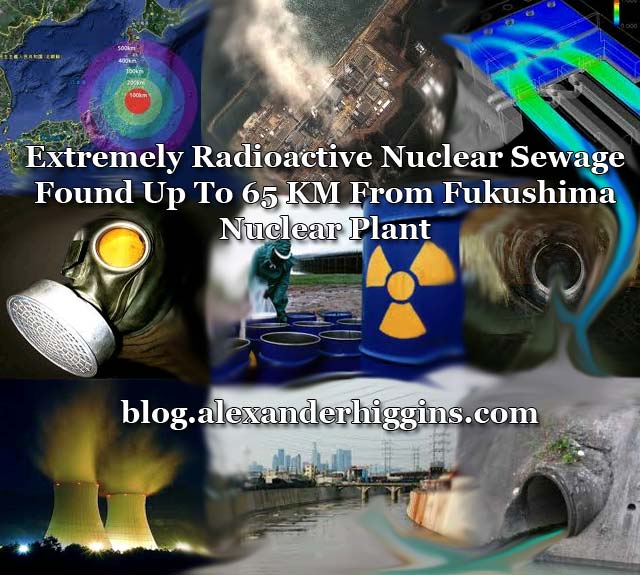
Radioactive Sewage Piling Up All Over Eastern Japan With No Plan For Disposal
As I previously reported, extremely radioactive sewage was detected in 19 out of 20 places tested at distances up to 65 kilometers from the Fukushima nuclear power plant.
On May 7th Arnie Gunderson gave us a brief overview of the most threatening issues at the Fukushima nuclear reactor. He informed us the urgent problem of radioactive wast in the Japanese sewer system was coupled with radioactive contamination in the groundwater being the worst in nuclear history .
Fukushima Japan Groundwater Radiation Contamination Worst in Nuclear History
An in depth analysis of the current state of the Japan nuclear disaster reveals that the Fukushima Japan groundwater radiation contamination is the worst in nuclear history.Read More
Today we learn that the radioactive sewage sludge is piling up all over Eastern Japan and officials have no idea what to do with it. Apparently, the Government of Japan thought that just because they said it was safe companies would believe them and use it to produce cement but the corporations aren’t buying it. Instead the waste is sitting around in containers as the highly radioactive sludge continues to build up.
Unwanted radioactive sewage sludge piling up

Bags of incineration ash are piled up on the passageway of a sewage treatment facility in Kawasaki. (Mikio Kano)
Radioactive sewage sludge is quickly filling up treatment facilities in eastern Japan as recycling companies have refused to accept it for safety reasons.
The central government, which has only presented guidelines for temporary storage, plans to set standards on final disposal.
Radioactive cesium was first detected in sludge at a sewage treatment facility in Koriyama, Fukushima Prefecture, on May 1.
[...]
Radioactive sewage sludge has since turned up at facilities in Tokyo, Kanagawa, Saitama and other prefectures.
Officials believe that radioactive materials from the Fukushima No. 1 nuclear power plant flowed into sewage pipes with rainwater and were condensed during sewage treatment.
[...]
In normal times, about 80 percent of sewage sludge nationwide is recycled into cement and fertilizers after it is incinerated into ash.
But at the Iriezaki Centralized Sludge Treatment Center in Kawasaki, about 220 tons of incineration ash in 550 double-layered bags have been piled up on the passageway and elsewhere.
Director Takashi Ookouchi said the center will run out of storage space in a few days.
An inspection on May 13 found 470 becquerels of radioactive cesium per kilogram of sewage sludge and 13,200 becquerels per kilogram of incineration ash.
[...]
A local company that reuses ash for cement said it will not take it until safety is confirmed.
At a sewage treatment facility in Tachikawa, western Tokyo, bags of incineration ash occupy half of an underground warehouse.
A cement company has refused to accept it since radioactive cesium and iodine were found from sludge and ash.
Toshiyuki Hattori, chief of the sewage treatment plant, said the storage space will run out at the end of June.
In Ibaraki Prefecture, radioactive sludge has been found at all of its eight sewage treatment facilities, and shipments have been suspended.
[...]The Tokyo metropolitan government decided in May to bury incineration ash from its 23 wards at a disposal facility in Tokyo Bay.
Ash was mixed with cement and covered with soil, but the amount of radiation at the site was three to eight times larger than in Shinjuku Ward on May 25.
In late March, 170,000 becquerels of radioactivity was detected in 1 kilogram of incineration ash at a sewage treatment facility in Koto Ward, and radioactive materials were also found at other facilities.
[...]
The Nagano prefectural government is worried because cesium was found in incineration ash at a sewage facility in Suwa.


